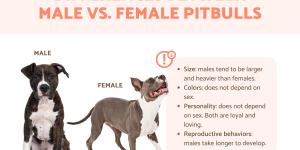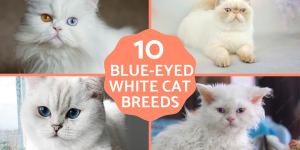Differences Between a Persian vs. Angora Cat



See files for Cats
Although there are marked differences between Turkish Angora and Persian cats, they are often confused for each other. The reason is due to both being longhaired cat breeds. However, if we take a close look, we can see it is fairly easy to spot their differences, especially when we see them in person. The purpose of this AnimalWised breed comparison is to look at the similarities and differences between a Persian vs. a Turkish Angora cat. By comparing the two breeds, we can not only distinguish their appearance, we can determine which cat breed might be a better companion animal for you.
Physical differences between Persian vs. Angora cats
We begin our breed comparison of the differences between a Persian and a Turkish Angora cat by the most initially obvious. By this, we are referring to the physical characteristics which differentiate them. These will be the following:
- Nose: perhaps, the most obvious difference in some Persian cats is the nose. This is because there are different types of Persian cats. Some have peke-typing which is due to brachycephaly, a condition where the nose is squashed and they have an elongated soft palette. This can be more or less extensive, with Traditional Persians having no brachycephalic features. Turkish Angora cats do not have brachycephaly, so a squashed nose will mean they are Persian, but not necessarily Angora.
- Tear ducts: due to the flattening of the snout of brachycephalic cats, their tear ducts often secrete fluid persistently (a condition known as epiphora). If the cat has tear stains around their eyes, they are more likely to be Persian. However, an Angora may have tear stains if they have an eye infection.
- Head: the skull of a Persian cat is more rounded, compared to the more almond-shaped appearance that Angora cats possess.
- Ears: Persian cats are known for their small rounded ears, whereas Turkish Angora cats have longer more pointed ears.
- Coat: although both Persian and Turkish Angora cats can have a variety of coat colors and patterns, Turkish Angora cats are most commonly white. They are also more prone to heterochromia, a condition whereby their eyes are two different colors.
- Size: although both breeds can have relatively small specimens Persian cats are generally larger than Turkish Angora cats. It is rarer for angora to reach 6 kg. They are also shorter in length.
- Body shape: Persian cats are more robust than the Angora with more elongated and slender body, although muscular it is usually quite muscular.
Due to these differences, especially those related to the care of the periocular area, we could conclude that Persian cats require somewhat more maintenance than Angora cats. Since both Angora cats and Persians are longhaired cats, their coats will need brushed regularly. Take a look at our article on caring for a Persian cat's coat to learn more.
Character differences between Persian and Angora cats
Beyond the physical differences which means you can tell a Persian cat from an Angora are their behavioral differences. While every cat is an individual with their own behaviors and traits, there are some behaviors which are more common in certain breeds compared to others. For the Angora and Persian cats, the following stand out:
- Sociability: the Persian cat is generally considered more independent, while the Turkish Angora cat will better accept human coexistence. However, this does not imply that they are enthusiastic about displays of affection. In fact, it is common for the Angora to not accept too much physical interaction. The Angora is more predisposed to say hello when we get home and to interact more with a greater number of people. Of course, a Persian will also want interaction once they build a bond with their caregiver. Although sometimes surly, a Persian can be very affectionate when they want to be. It is best to let a Persian cat seek affection rather than try to force and interaction.
- Activity: Persian cats tend to be calm and not very active, preferring the calm of a soft sofa to the hustle and bustle of a game session. Games and play are better accepted by the much more playful Turkish Angora. As a result of these low activity levels, it is necessary to carefully control the weight of our Persian. While all cats will need some levels of environmental enrichment, Angora cats will need more than the Persian if we want to keep them stimulated.
- Behavior with children: due to the characteristics we have mentioned, Persian cats are less likely to tolerate the presence of children, especially if they do not respect their space and their need for tranquility. Turkish Angora cats can better accept living with little ones. Regardless of breed, we always have to educate children in showing respect for all living beings and we cannot leave them together without the supervision of an adult.
- Living with other animals: these relationships will be easier for an Angora cat, since Persians are less likely to tolerate interference in their habits.
All these data respond to a general characterization. It must be emphasized that not all cats of these breeds will follow these patterns.

One last note in Persian vs. Turkish Angora
Now you know the physical and behavioral differences between Turkish Angora and Persian cats, we should point out another important factor. In terms of health, Persian cats tend to suffer more from disease. Some of this is related to their brachycephaly. This is because a limited gene pool tends to pass on hereditary disease. One such disease in Persian cats is polycystic kidney disease.
As its names suggests, polycystic kidney disease leads to cysts on the kidneys which deplete their function. Eventually, they will lead to kidney failure, although it is a disease which can be slowed through management. They can also suffer from respiratory problems due to their flatten snouts (it is not as common in Traditional Persians). This leads to an increase in the likelihood of developing respiratory infections. Also, brachycephaly has been linked to heart problems. Coupled with a lack of exercise, it generally means Persian cats are more prone to health problems than Turkish Angora cats.
If you want to read similar articles to Differences Between a Persian vs. Angora Cat, we recommend you visit our Comparisons category.






 Hello! Could you please inform me if this cat is a turkish angora or some kind of mix? Thank u!
Hello! Could you please inform me if this cat is a turkish angora or some kind of mix? Thank u!

